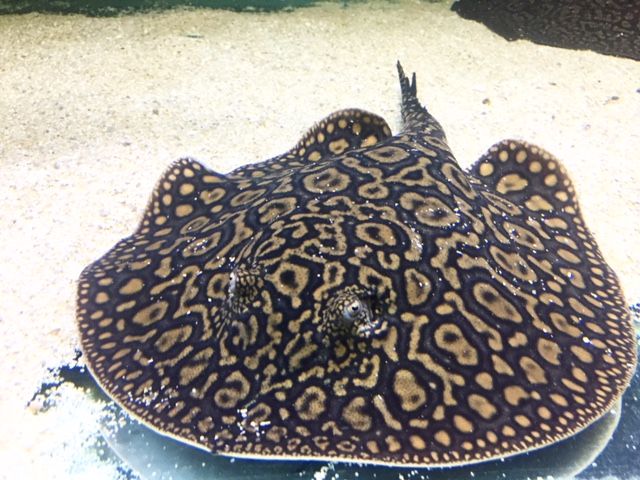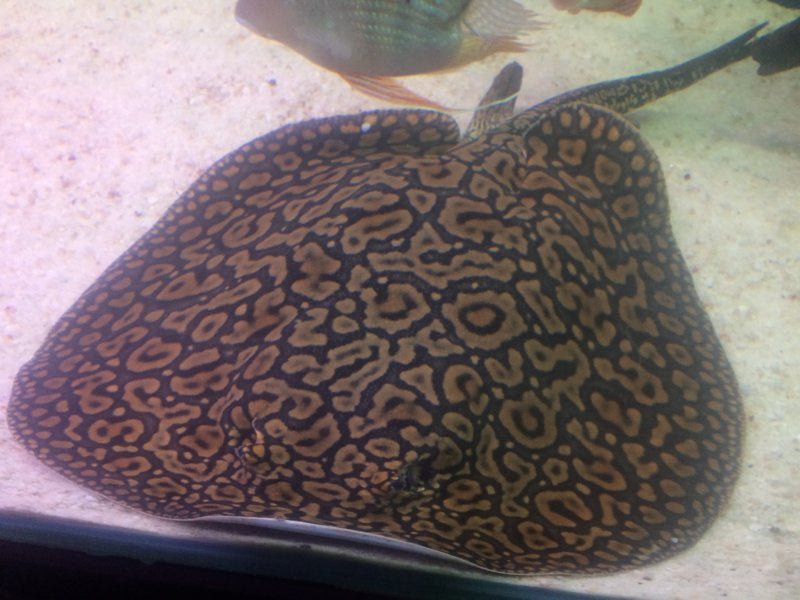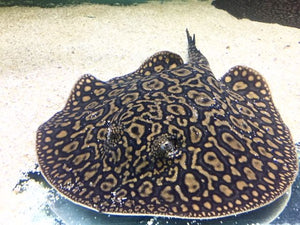

While we make every effort to ensure that our online stock levels are accurate and up to date, some products—particularly those that are perishable or subject to daily changes—may vary in availability. This includes livestock, fish, corals, and both fresh and frozen foods. Due to the nature of these items and their dependence on factors such as shipment schedules, health status, and in-store demand, availability can change rapidly and may not always be reflected in real time on our website.
To avoid disappointment, we strongly encourage customers to confirm the availability of these products before placing an order or visiting In-Store. You can do this easily by using the "Ask a Question" tab on the product page or by calling us directly on 0460 961 696 .
Our friendly team will be happy to assist and provide the most up-to-date information on current stock.

Graceful, intelligent, and unlike anything else in the freshwater world, the Mantilla Freshwater Stingray (Potamotrygon sp. 'Mantilla') glides across the aquarium floor like living artwork. With a velvety, dark body patterned in creamy white or yellowish rosettes, this South American native is a stunning and interactive showpiece—but one that demands serious commitment. Best suited for experienced aquarists, this ray requires a large, well-maintained setup and specialised care.
Species: Potamotrygon sp. 'Mantilla'
Common Names: Mantilla Stingray, Freshwater Stingray, River Ray
Origin: South America – likely Amazon Basin tributaries (exact collection localities vary)
Light Requirements: Low to moderate
Diet: Carnivorous – prefers live or frozen foods such as bloodworms, blackworms, earthworms, shrimp, and finely chopped seafood; will accept sinking carnivore pellets over time
Maximum Size: Up to 40–50 cm disc width in captivity
Temperament: Peaceful and curious
Care Level: Advanced
Aquarium Setup:
Mantilla rays require a large aquarium—minimum 600 litres, with dimensions prioritising floor space over height. A soft, sandy substrate is essential to prevent injury, and décor should be minimal to maximise swimming room. Strong filtration and excellent water quality are non-negotiable. Use canister filters or sump systems with biological and mechanical media. Ensure all heater and pump intakes are covered, as rays are bottom dwellers prone to burns or injuries from equipment.
Water Parameters:
Temperature: 25–28°C
pH: 6.5–7.5
Hardness: Soft to moderately hard (2–12 dGH)
Ammonia/Nitrite: 0 ppm – extremely sensitive to spikes
Nitrate: <20 ppm
Growth and Maintenance:
Mantilla rays grow steadily and may live 10–15+ years in captivity. They are intelligent and interactive, often recognising their keepers and hand-feeding once settled. Juveniles require frequent small meals, and regular large-volume water changes are essential to manage waste. Sand must be kept clean, and uneaten food should be promptly removed.
Care Tips:
✔ Provide soft, fine sand—no gravel or sharp décor
✔ Feed multiple times daily during juvenile stages
✔ Use strong filtration and perform large, regular water changes
✔ Never handle by the tail or lift by the disc
✔ Use tight-fitting lids—rays can jump!
Compatibility:
Can be housed with large, peaceful tankmates such as Silver Dollars, Severums, Geophagus species, or arowanas. Avoid aggressive or nippy fish, and never house with bottom dwellers that may outcompete them for food. Best kept alone or in species-only tanks unless the tank is massive and carefully stocked.
Availability:
Rare and highly sought after in the Australian aquarium trade. Juveniles may be imported or locally bred under strict conditions—always check licensing and legality in your state or territory. Please contact us directly for availability, care advice, and transport arrangements.
Disclaimer:
"Freshwater stingrays are protected or restricted in some parts of Australia. It is the buyer’s responsibility to ensure compliance with local wildlife laws. These animals are sensitive to poor water quality and require advanced care and planning."



